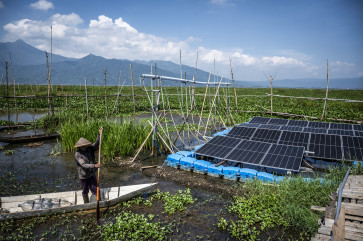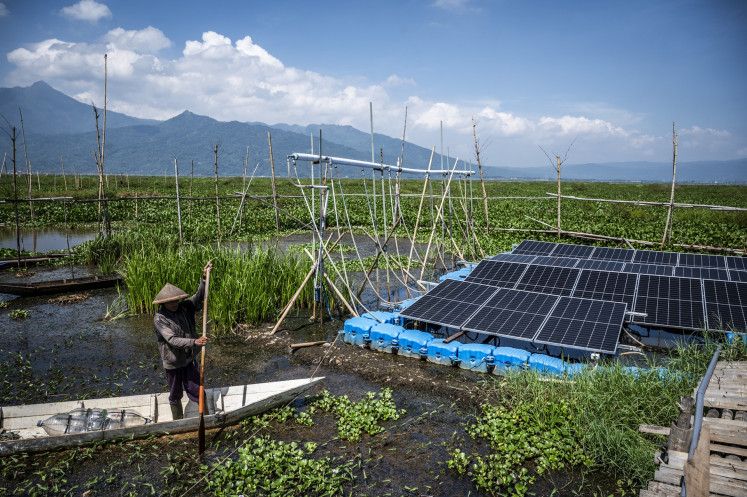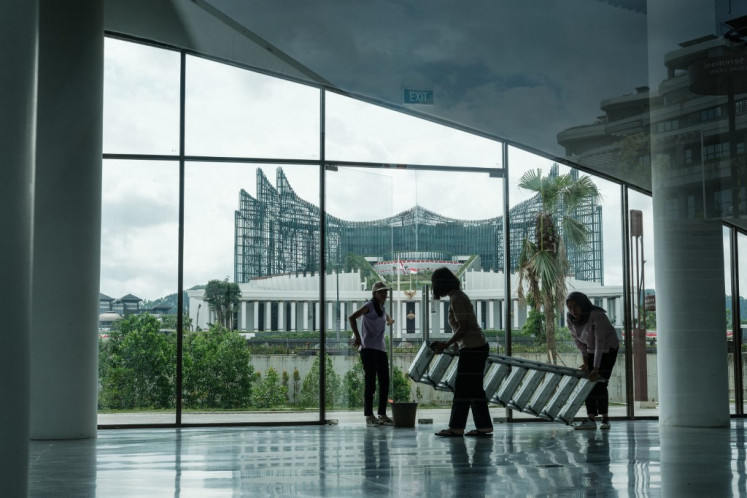Popular Reads
Top Results
Can't find what you're looking for?
View all search resultsPopular Reads
Top Results
Can't find what you're looking for?
View all search resultsMiddle class shifting to non-subsidized fuels
Following the governmentâs decision to raise subsidized fuel prices, middle-class motorists have shifted to non-subsidized fuels since the price gap has narrowed
Change text size
Gift Premium Articles
to Anyone
F
ollowing the government's decision to raise subsidized fuel prices, middle-class motorists have shifted to non-subsidized fuels since the price gap has narrowed.
President Joko 'Jokowi' Widodo on Monday evening announced the new price of subsidized Premium gasoline, setting it at Rp 8,500 (70 US cents) from previously Rp 6,500.
That compares with the price of non-subsidized Pertamax ' Rp 10,200 per liter ' which is driven by market price, meaning that the difference has narrowed to Rp 1,700 from Rp 3,700 per liter previously.
The gap is the smallest since late 2008 and will be even narrower as state oil and gas firm Pertamina, which sells subsidized and non-subsidized fuels, will slash the price of Pertamax to below Rp 10,000 per liter.
East Jakarta resident Fabian Kuwado, 25, said he preferred Pertamax over Premium for both his motorcycle and car for its better quality.
'The disparity between prices of subsidized and the non-subsidized fuels have narrowed anyway. I have always used Pertamax for my motorcycle. As for my car, which I only use occasionally, I also use Pertamax, particularly for long trips. It is better for the engine,' he told The Jakarta Post on Tuesday.
Pertamina marketing director Hanung Budya said nozzles for non-subsidized fuels would be increased at Pertamina gas stations as Pertamax sales could jump to 10,000 kiloliters (kl) per day.
'Narrower [price] disparity should make consumers shift to Pertamax,' Hanung said, adding that sales of subsidized Premium and Solar, on the other hand, would decrease by 50 percent on the first day of new fuel prices and return to normal after five to six days.
Another resident, Nike Caroline, said she preferred Shell-produced fuel. 'I opt to buy Shell because I don't need to line up and it is more efficient too,' she said.
Meanwhile, low-income residents said they generally approved of the government's decision and resorted to austerity cuts.
'Low-income people in general have fewer needs. I am fine with riding my bicycle everywhere. I have also told my children to not use the motorcycle too often and they complied,' Sumari, 53, a bicycle renter in the Old Town area in West Jakarta, said.
West Jakarta resident Yuli said she did not oppose the new government's decision, knowing that it was aimed at a greater good.
'Even though I didn't expect it would be this soon, I am fine with it. I know the money will be allocated for education and health,' Yuli said, pointing out that her two children had enjoyed the Jakarta Smart Card (KJP) education allowance.
The burdensome and poorly targeted fuel subsidies, which at Rp 276 trillion accounted for 15 percent of overall state spending this year, have been criticized for hampering more productive spending such as for social, health and infrastructure.
Jakarta Police spokesman Sr. Comr. Rikwanto told the Post that the police would not specifically deploy officers to gas stations when not requested. However, he said, all police precincts had been told to remain alert for any possible commotion caused by demonstrators protesting the rise in fuel prices.
'We are especially prepared to protect demonstrators in large public spaces such as the Presidential Palace, the Hotel Indonesia traffic circle and also the National Monument [Monas],' he said.
Rikwanto added that two protests were staged in Jakarta on Monday evening after the announcement of the price hikes: one by Social and Political Sciences Institute (IISIP) students at their campus in Lenteng Agung, South Jakarta, and another by the Islamic Students Association (HMI) on Jl. Cikini Raya in Central Jakarta.
The police were forced to use tear gas on the IISIP students as the group of protesters were believed to have resorted to violence, Rikwanto said.
Separately, Central Jakarta Police chief Sr. Comr. Hendro Pandowo said that 2,000 officers were stationed in front of the Presidential Palace on Tuesday in case of more protests. Two water cannon were on standby during the day.
The police were notified that the protesters comprised several groups: the Indonesian Muslim Student Association (PMMI), Hasbih Tahrir, the Red-and-White Students Movement (PMMP) and the Islamic Indonesian Muslin Students Action Front (KAMMI).
- Corry Elyda contributed to this story










